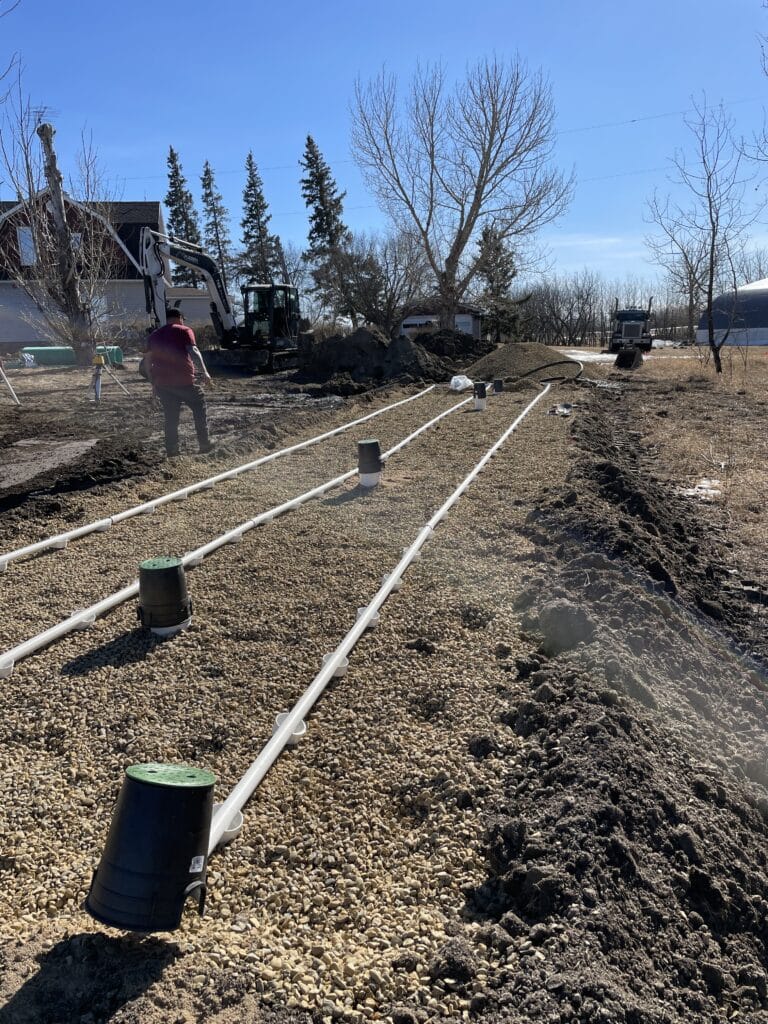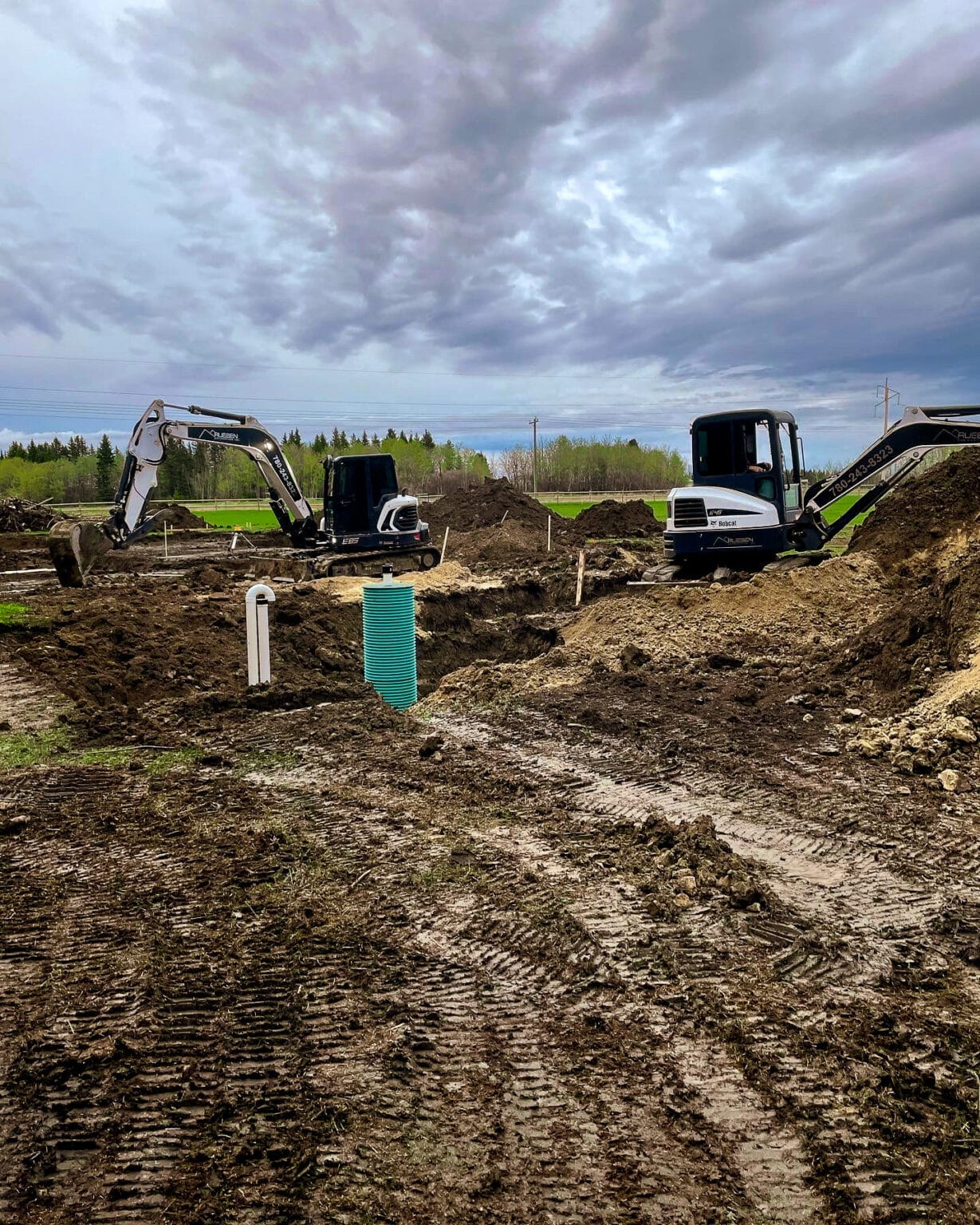Septic System Repair & Installation in Dallas, TX & Surrounding Areas
Septic System Services

The Right Fit For Your Next Septic System Project
We understand that septic systems can be a bit of a mystery, that’s why we are here to educate and inform you so you can make the best decisions for your desired outcomes.
No two septic systems are the same and no one solution fits all when it comes to repairs. We are always more than happy to answer any questions you have or provide on-site consultation for whatever septic system services in Dallas, TX, you may need. We want you to be as informed as possible about the condition of your septic system so you can rest assured that your home or business is in good hands.
Work With Rueben Group for Your Septic System Services in Dallas
We pride ourselves on delivering top-tier septic system services where quality craftsmanship meets innovative solutions. Our team of seasoned septic system experts utilizes the latest industry advancements to ensure every repair and installation is executed with precision and care. Furthermore, by choosing Rueben Group, you’re investing in a septic system that’s built to last and backed by a commitment to excellence and customer satisfaction that sets us apart from any other competition we may have.
Septic System Repair, and Installation in Texas
When it comes to a septic system that isn’t working the typical answer you will receive from most companies is, “You need to tear this out and replace it all.” We don’t see this as the first step—this can be costly and disruptive to your property and not always necessary.
We prefer to determine what caused the problem and solve this, rather than just tearing everything out. A great solution to a failing field can be installing a sludgehammer NSF-40 unit into your existing septic tank or monitoring and reducing water flow into your tank. Sometimes water treatment RO systems or softeners are improperly set up and these can cause major issues with your system.
If need be, we are more than happy to replace your entire system with a new design; however, this is our last resort.
We Get the Job Done Right
At Rueben Group, we prioritize swift and effective solutions for septic system issues, minimizing disruption to your daily life. Our process starts with a prompt, comprehensive assessment to diagnose the problem accurately. Utilizing advanced diagnostic technology, our team ensures precise identification of issues, enabling us to tailor solutions specifically to your system’s needs. This approach allows us to quickly address and resolve any problems, avoiding unnecessary interventions and focusing on the most efficient repair or adjustment required.
We are equally committed to transparency in our cost estimates, ensuring you understand all financial aspects before work begins. Our goal is to deliver the most economical options that align with your budget without sacrificing quality. Moreover, projects are completed within set timeframes, with continuous communication to keep you updated on our progress throughout the entirety of whatever septic system services you need.


What to Know Before You Install a Septic System
Septic systems otherwise known as OSSF (on-site sewage facilities) are how we treat sewage and waste water from your home, they are complex systems used to remove solids, nitrates and bacteria from the waste water by various means in order to ensure ground water does not become contaminated. However, there are several critical factors homeowners must consider to ensure their wastewater management system’s long-term success and efficiency.
- Understanding the type of septic system that best suits your property is essential. The size of your lot, the soil type, and the proximity to water bodies are all pivotal factors that influence the choice between a conventional septic tank and drain field system, an aerobic treatment system, or one of the more advanced mound or sand filter systems.
- Local regulations and permits cannot be overlooked. Most regions have strict codes governing the installation of septic systems to protect public health and the environment. Engaging with a professional from Rueben Group ensures compliance with these regulations as we navigate the permit process and adhere to all local, state, and federal guidelines.
- The long-term maintenance of your septic system is a consideration that should influence the planning and installation phases. Regular inspections, pumping, and maintenance activities are necessary to extend the lifespan of your system and prevent costly repairs.
- Budgeting for your septic system installation requires a comprehensive understanding of both upfront and ongoing costs. Investing in top-quality materials and professional installation can mitigate future issues, making it a wise long-term investment for your property.
By considering these factors and partnering with Rueben Group for your septic system services in Dallas, TX, homeowners like you can ensure the successful installation and operation of your septic system.
We Handle the Dirty Work
We have a team of experienced and certified septic technicians who are available to help with any problems you may have. If you need septic service, don’t hesitate to contact us today. You can reach out to our team by phone at 945-227-1077 or by requesting a quote online now. We are always happy to be of service!

